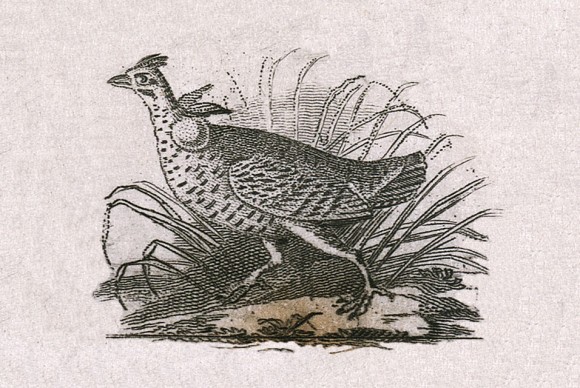Researchers Unveil “Holy Grail” of Audubon Illustration
July 31, 2010 by All Art News
Filed under Education & Research
PHILADELPHIA (REUTERS).- Researchers have found the first published illustration by John James Audubon, America’s most famous bird artist, ending decades of searching for the prized but elusive work.
Audubon had made two references to the illustration in his diaries, but it had never been seen until it was found on a sheet of sample images produced in 1824 by a New Jersey engraver who specialized in illustrations for banknotes.
Eric Newman, a numismatic, or currency, historian working with Robert Peck, a senior fellow with Philadelphia’s Academy of Natural Sciences who had spent the last decade looking for the long-lost illustration, discovered it.
“It’s the holy grail of Audubon scholarship,” said Peck. “It’s significant because it was at a significant turning point in his life.”
Some researchers doubted its existence and even suggested that Audubon lied when he wrote about it to enhance his reputation before the publication of his masterwork “Birds of America,” starting in 1827.
Although it is unsigned, the image is clearly Audubon’s work because its detail – the bird is shown running through its grassy habitat – is characteristic of the artist’s ornithological expertise, according to experts.
“This is vintage, quintessential Audubon,” said Roberta Olson, curator of drawings at the New York Historical Society, which houses all 435 original watercolors for “Birds of America.”
The discovery, announced by the Academy on Thursday, will be published in the Journal of the Early Republic, a historical periodical, this fall.
The choice of subject suggests Audubon had little concept of what bankers might want on their notes, and helps to explain why the illustration had eluded scholars for so long.
“A skittish, shy, running grouse doesn’t instill great confidence in the bank,” Peck said.
Bankers in the early 19th century were more inclined to opt for images of eagles, or past presidents, to convey strength and stability to their customers, and so showed little interest in the grouse.
If the illustration of the now-extinct Heath Hen found its way on to banknotes in any quantity, it would have been at the New Jersey State Bank, for which the engraver, Gideon Fairman, produced the samples.
The bank’s Trenton branch failed in 1825 and its only other branch, in Camden, later destroyed all small-denomination bills in an effort to stop counterfeiting.
But Fairman, seeking business from the thousands of different bills in U.S. circulation during the first half of the 19th century, also produced the image for a bank in Norwalk, Ohio, which put it on a sample $3 bill, and for a bank in Bridgeport, Connecticut, which used the grouse on a $5 bill, also just a sample, Peck said.
Two of the Bridgeport notes, and one from the Ohio bank, are now known to exist. All are owned by Newman, who is planning to put them on public display at a numismatic museum in St. Louis later this year. The sample sheets and notes will also be exhibited at Princeton University in 2011.
Related posts:
- John James Audubon: American Artist and Naturalist at the Boise Art Museum
- Nation’s Illustration Museum Celebrates 10th Anniversary
- Original Illustration Art from the Collection of Kendra and Allan Daniel Offered at Sotheby’s
- Gil Elvgren dominates in $3.725+ million Illustration Art event at Heritage Auctions as Fire Belle brings
- Vargas, Sundblom and Elvgren Masterpieces Anchor Illustration Art Auction in Beverly Hills

